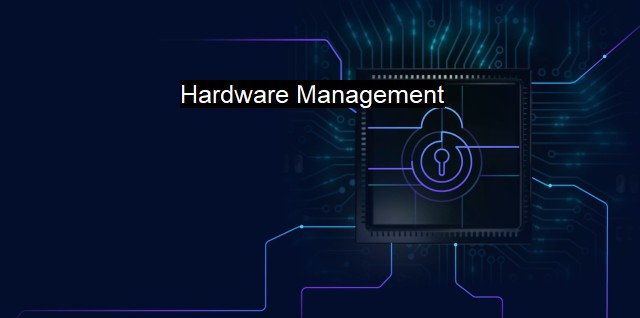What is Hardware Management?
Securing Your Hardware: The Vital Role of Hardware Management in Cybersecurity and Antivirus Protection
Hardware Management refers to the administration and oversight of physical components of a computer system or network, including aspects such as servers, storage devices, desktops, and printers. It is widely perceived as the backbone of any IT infrastructure, providing the crucial platform upon which all software applications operate.Under the broader domain of IT management, Hardware Management assumes a pivotal role in cybersecurity. The reason being the rampant increase in threats exploiting hardware vulnerabilities, which could lead to device damage, software corruption, or even disclosure and theft of sensitive information.
Hardware Management involves the identification, evaluation, and mitigation of potential physical threats to computer systems and networks. One of the emerging concern areas is hardware-based attacks, wherein attackers leverage physical device vulnerabilities to compromise system security. For instance, a popular attack type is a firmware-level attack where the threat actors exploit the device's firmware, potentially enabling them to take control of the entire device or system.
Hardware vulnerabilities can also take the form of side-channel attacks, exploiting the physical properties of computer devices rather than the software. A famous example is the 'Spectre' and 'Meltdown' vulnerabilities found in most modern computer processors, revealing a new level of hardware-based threats that the industry was hitherto unprepared to handle.
To combat such pervasive threats, a comprehensive antivirus mechanism should be in place. This includes signature-based, heuristic-based, and behavior-based detection methods to identify and neutralize malicious hardware threats effectively.
Hardware Management becomes more significant in ensuring that network devices are properly organized, configured, updated and patched, preventing cyber threats from exploiting these devices. Any device's firmware, the interface between hardware and its operating system, can become a potential entry point for malware. Therefore, diligently patching and updating them can neutralize such threats.
Network hardware such as routers and switches can be intentionally targeted in cyber-attacks aiming to disrupt or eavesdrop on network traffic. Securing network hardware comprehensively is vital for preventing unauthorized access and ensuring the safe transportation of data across networks.
Instituting appropriate Hardware Management goes beyond merely maintaining and monitoring devices and networks; it engulfs areas like hardware asset management, lifecycle management, and hardware security. For instance, knowing what hardware assets the organization has, where it's located, who is using it, and when warranty/service/support contracts are due, is imperative for managing network vulnerabilities effectively.
Hardware lifecycle management is also essential, considering hardware's ever-evolving nature. Replacing obsolete devices that cannot support advanced security features, adopting secure disposal practices for outdated pieces of hardware to prevent unauthorized redemption, and following secure procurement and supply chain practices to mitigate risks of hardware tampering or the introduction of harmful firmware are of paramount importance.
Further, integrating physical security measures like locks, biometrics, and restriction of physical access to the hardware to the minimal essential personnel should also be a significant aspect of hardware management in cybersecurity architecture.
Establishing a robust Hardware Management strategy is imperative for organizations to bolster their cybersecurity posture. Cybersecurity compels organizations to conceive above conventional software-based attacks and progressively focus on handling hardware-based threats, thereby centralizing hardware management as a critical tenet of a comprehensive cybersecurity strategy. Through meticulously monitoring the health and performance of physical devices, ensuring their continual updating and patching, and controlling access, organizations can shield their operations from potentially debilitating security threats.

Hardware Management FAQs
What is hardware management in the context of cybersecurity and antivirus?
Hardware management in the context of cybersecurity and antivirus refers to the process of monitoring and maintaining the physical components of a computer system, such as servers, routers, switches, firewalls, and other network devices. This includes activities like configuring, updating, patching, and troubleshooting these devices to ensure that they are secure and operating efficiently.Why is hardware management important for cybersecurity and antivirus?
Hardware management is important for cybersecurity and antivirus because vulnerabilities in hardware can be exploited by cybercriminals to gain unauthorized access to systems, steal sensitive information, or launch attacks against other systems. By keeping hardware up-to-date and properly configured, organizations can reduce the risk of security incidents and protect their assets and information from cyber threats.What are some best practices for hardware management in the context of cybersecurity and antivirus?
Some best practices for hardware management in the context of cybersecurity and antivirus include implementing a comprehensive hardware inventory, keeping firmware and software up-to-date, disabling unnecessary services and ports, segmenting networks, using strong authentication and encryption, monitoring for suspicious activity, and performing regular backups and disaster recovery drills. These practices can help organizations maintain a secure and resilient IT infrastructure that can withstand cyber attacks.What are some common challenges in hardware management for cybersecurity and antivirus?
Some common challenges in hardware management for cybersecurity and antivirus include keeping up with rapidly changing technology, managing a large and diverse inventory of devices, ensuring compatibility and interoperability between hardware and software, dealing with vendor lock-in and proprietary systems, handling legacy systems and equipment, and balancing security needs with performance and usability. Overcoming these challenges requires a mix of technical expertise, strategic planning, and effective communication and collaboration between IT teams and stakeholders.| | A | | | B | | | C | | | D | | | E | | | F | | | G | | | H | | | I | | | J | | | K | | | L | | | M | |
| | N | | | O | | | P | | | Q | | | R | | | S | | | T | | | U | | | V | | | W | | | X | | | Y | | | Z | |
| | 1 | | | 2 | | | 3 | | | 4 | | | 7 | | | 8 | | |||||||